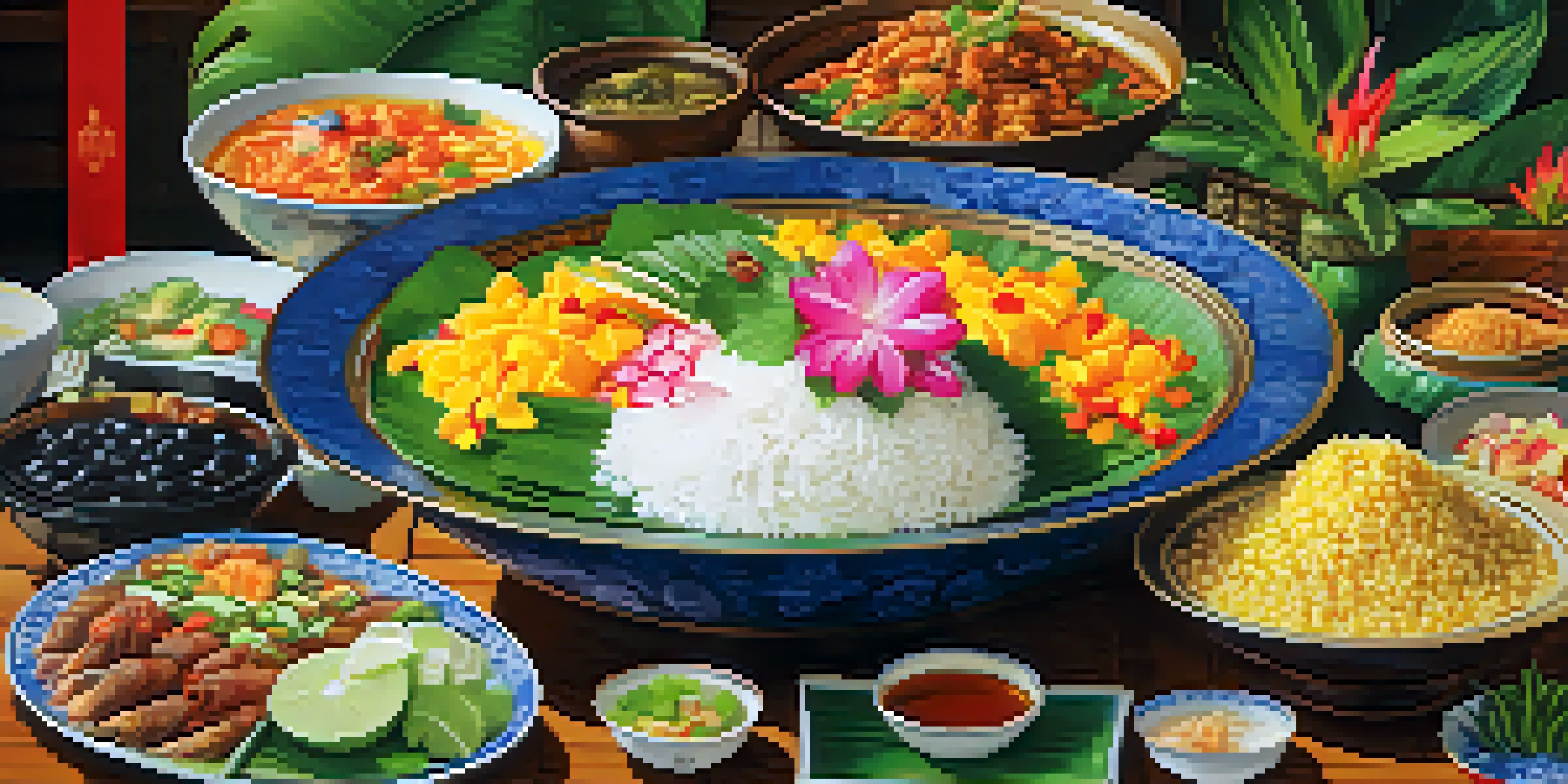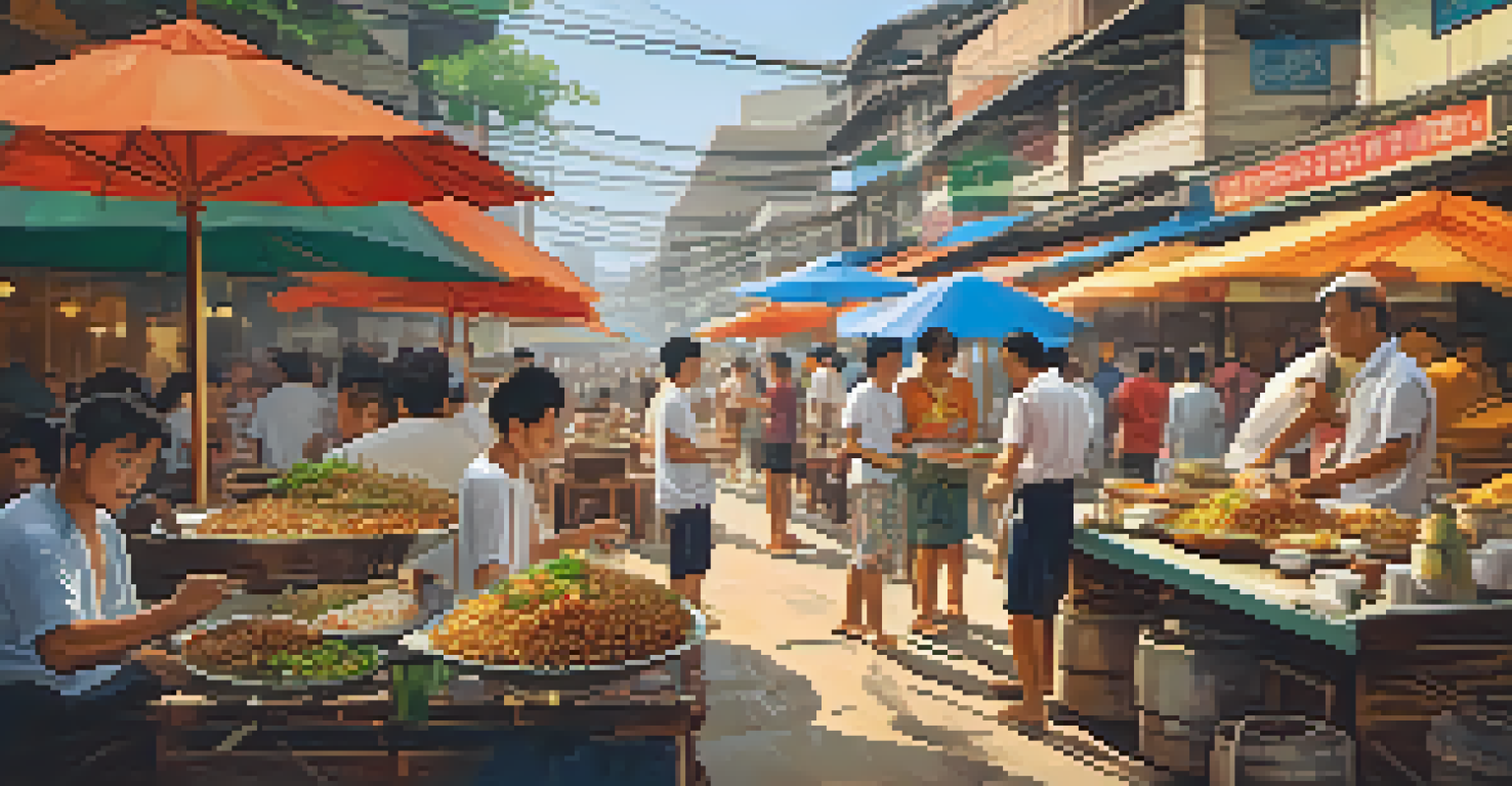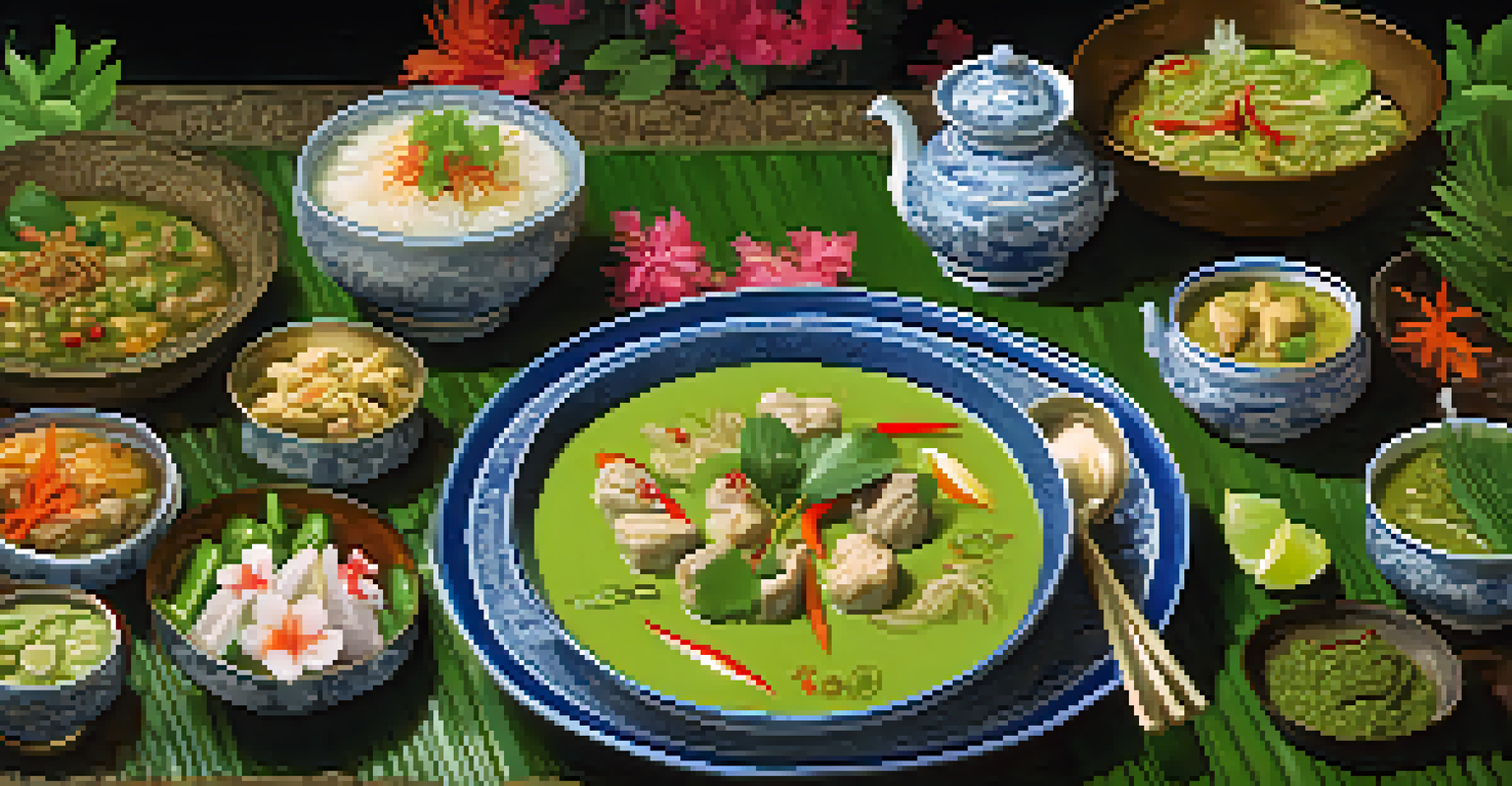A Taste of Thailand: The Culinary Delights of Songkran

Celebrating Songkran: A Culinary Journey Begins
Songkran, Thailand's traditional New Year festival, is not just about water fights and festivities; it's also a time to indulge in the country's rich culinary heritage. As families come together to celebrate, the air fills with the enticing aromas of various Thai dishes. This annual event, which marks the start of the solar calendar, provides a perfect backdrop for showcasing the flavors that define Thai cuisine.
Food is not just what we eat; it is a way of sharing love and creating memories.
During Songkran, food plays a central role in family gatherings and community celebrations. From street vendors to lavish feasts at home, the diversity of dishes highlights regional specialties and age-old traditions. People often prepare food in large quantities to share with neighbors and friends, fostering a sense of community and togetherness that is quintessentially Thai.
As we dive into the culinary delights of Songkran, we’ll discover not only the flavors but also the stories behind the dishes. Each bite tells a story of culture, history, and the vibrant life of the Thai people. So, let’s embark on this delicious journey through Thailand’s festive table!
Traditional Dishes That Define Songkran Celebrations
When it comes to Songkran, certain dishes stand out as favorites among families. One of the most beloved is 'Khao Chae,' a refreshing rice dish served in chilled water and often accompanied by an array of side dishes. This delicacy not only cools you down during the hot season but also brings a sense of nostalgia, as many people associate it with family traditions during the festival.

Another iconic dish is 'Som Tum,' a spicy green papaya salad that perfectly balances flavors of sweet, sour, and salty. This salad is commonly found at street stalls and restaurants, and its fresh, zesty profile makes it a staple during the celebrations. The crunch of the papaya combined with the heat of chilies makes it a crowd-pleaser that represents the lively spirit of Songkran.
Songkran: A Culinary Celebration
Songkran is not only a time for festivities but also a celebration of Thailand's rich culinary heritage, where families come together to share traditional dishes.
Additionally, no Songkran feast would be complete without 'Pad Thai,' Thailand’s famous stir-fried noodle dish. Although it's enjoyed year-round, its presence during Songkran reflects its status as a national favorite. This dish's versatility allows for endless variations, making it a beloved choice for families looking to enjoy a hearty meal together.
Street Food: The Heartbeat of Songkran Festivities
During Songkran, street food vendors play an essential role in the culinary landscape. As people flock to the streets to celebrate, the enticing sights and smells of sizzling dishes fill the air. From crispy spring rolls to skewered grilled meats, the variety of street food available during this festival is simply irresistible.
The flavors of a culture tell the stories of its people.
Eating street food during Songkran is not just about the food itself; it's also about the experience. The vibrant atmosphere, lively conversations, and the joy of sharing meals with friends and family create unforgettable memories. Vendors often set up their stalls close to water fights, allowing festival-goers to refuel and keep the fun going.
One popular street food item is 'Moo Pad Krapow,' a stir-fried dish made with minced pork and Thai basil. Its spicy, savory flavor makes it a favorite among locals and tourists alike. The accessibility and affordability of street food ensure that everyone can partake in the culinary delights of Songkran.
Refreshing Beverages to Beat the Heat
As temperatures soar during Songkran, refreshing beverages become essential. One popular drink is 'Nam Manao,' a zesty limeade that provides a perfect balance of sweet and sour. This thirst-quenching drink is often enjoyed alongside meals, offering a refreshing respite from the heat.
Another traditional beverage is 'Cha Yen,' or Thai iced tea, known for its rich flavor and creamy texture. This chilled drink not only cools you down but also complements the bold flavors of Thai cuisine beautifully. Served in tall glasses with a generous amount of ice, it’s a delightful treat during the festivities.
Street Food Fuels the Festivities
The vibrant street food scene during Songkran enhances the festival experience, offering a variety of delicious dishes that bring people together.
For those looking for something unique, 'Thai Fruit Shakes' made with fresh tropical fruits are a must-try. These shakes are both delicious and nutritious, providing a burst of flavor that encapsulates the spirit of the season. Whether enjoyed as a snack or a dessert, they are a refreshing addition to any Songkran celebration.
Family Recipes Passed Down Through Generations
During Songkran, many families take the opportunity to prepare traditional recipes that have been passed down through generations. These cherished recipes often hold significant cultural value, connecting family members to their heritage and shared history. The preparation process becomes a bonding experience, filled with stories and laughter.
One example is 'Gaeng Kiew Wan,' or green curry, which is often made from scratch using fresh ingredients. Families gather to chop vegetables, grind spices, and simmer the curry together, creating a sense of unity in the kitchen. The end result is not just a meal but a symbol of love and tradition.
These family recipes vary from region to region, showcasing the diversity of Thai gastronomy. Each dish carries its unique flavors and stories, making every meal a celebration of culture and family ties during Songkran.
The Importance of Presentation in Thai Cuisine
In Thai culture, the presentation of food is just as important as the taste. During Songkran, dishes are often beautifully arranged, showcasing vibrant colors and intricate designs. This attention to detail reflects the Thai belief that food should be a feast for the eyes as well as the palate.
Garnishing plays a significant role in elevating the dining experience. Fresh herbs, colorful vegetables, and artistic arrangements make each dish visually appealing. For instance, a simple bowl of soup can be transformed into a work of art with the right garnishes, enticing everyone to dig in.
Community Spirit Through Sharing
At the heart of Songkran is the spirit of sharing, as families and friends prepare and exchange meals, reinforcing bonds and creating lasting memories.
The emphasis on aesthetics not only enhances the enjoyment of the meal but also symbolizes respect for the ingredients and the effort put into cooking. This cultural appreciation for presentation is evident during Songkran, where every dish tells a story of creativity and care.
Embracing the Spirit of Sharing and Community
At the heart of Songkran is the spirit of sharing, and this is beautifully reflected in the culinary traditions of the festival. Families and friends gather to prepare and share meals, fostering a sense of community that is integral to Thai culture. This emphasis on togetherness is what makes the festival so special.
During Songkran, it’s common to see people exchanging food with their neighbors, symbolizing goodwill and friendship. Sharing a meal is seen as a way to strengthen bonds and create lasting memories. The act of giving food also represents a gesture of hospitality, inviting others to partake in the festivities.

Ultimately, Songkran is not just about celebrating a new year; it’s about coming together to enjoy the flavors of life. The culinary delights of this festival serve as a reminder of the importance of community, love, and the joy of sharing experiences with those we cherish.